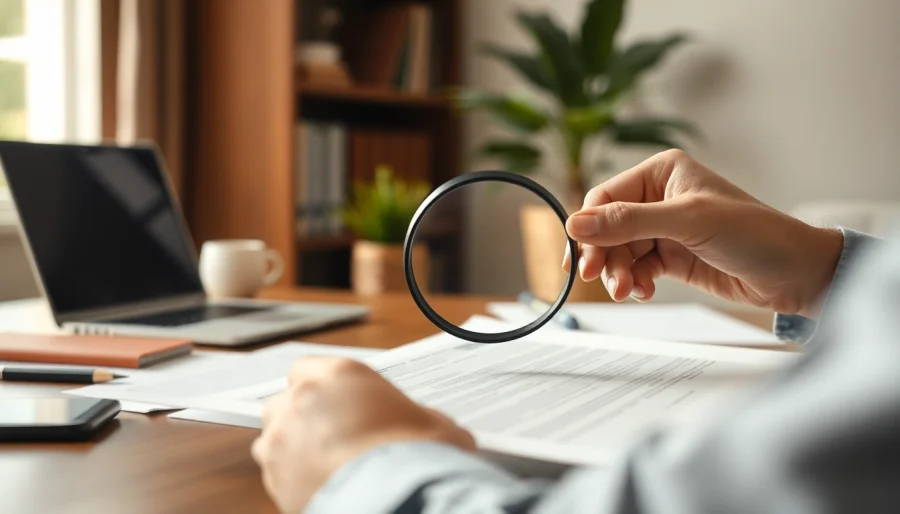Understanding Document Authenticity
What Does Document Authenticity Mean?
Document authenticity refers to the quality of being genuine, real, and trustworthy. In today’s world, where the prevalence of digital documents has increased dramatically, ensuring the authenticity of documents is more important than ever. Authentic documents are those that have not been tampered with and originate from legitimate sources. Whether they are powered by traditional ink and paper or exist in digital forms, authentic documents must meet several criteria to be considered valid.
Importance of Verifying Documents
Verifying documents is crucial for several reasons. Unauthorized or fake documents can lead to a myriad of problems, including fraudulent activities, legal disputes, and damage to reputations. In business transactions, authenticity ensures trust between parties and safeguards against potential losses. When asking how do I know this document is real, it is essential to assess the reliability and integrity of the document in question.
Common Types of Document Fraud
Document fraud can take many forms, including:
- Counterfeiting: The creation of fake documents that imitate genuine ones.
- Forged Signatures: Alterations made to signatures to falsify authorization.
- Alterations: Changes made to legitimate documents to misrepresent information.
- Misrepresentation: Presenting false documents under the guise of legitimacy.
Each of these types of fraud underscores the necessity for systematic verification and validation of documents across various sectors.
Key Methods to Verify Document Authenticity
Physical Examination Techniques
One of the first steps in verifying a document’s authenticity is to conduct a thorough physical examination. This assessment may involve:
- Paper Quality: Genuine documents are often printed on specific types of paper that have a distinct texture and weight.
- Watermarks: Many official documents include security features like watermarks that can be viewed when held up to light.
- Ink Analysis: Different inks can be assessed to determine if they match the expected types used in legitimate documents.
- Printing Techniques: Identification of printing methods can reveal inconsistencies that may point to forgery.
Digital Verification Tools
In a digital age, numerous tools are available to verify document authenticity quickly and effectively. These tools include:
- PDF Verification Software: Programs that can analyze the metadata of PDF files to confirm their origin and modifications.
- Blockchain Technology: Secure records stored on blockchain can provide undeniable proof of a document’s history.
- Digital Signatures: Mechanisms that utilize asymmetric cryptography to authenticate the sender’s identity and confirm document integrity.
- Online Databases: Many organizations maintain databases of validated documents that can be cross-referenced for verification.
Expert Services for Verification
When in doubt, expert services specializing in document verification can provide reassurance and assurance. These services often employ highly trained professionals who use a range of techniques to authenticate documents. They might analyze elements like secure seals, print characteristics, and historical records. For businesses, these services can offer comprehensive reports that elucidate the document’s legitimacy or fraudulence, adding an extra layer of security to transactions.
Signs of a Genuine Document
Key Features to Look For
Identifying genuine documents involves recognizing several key features, including:
- Consistency of Data: Legitimate documents exhibit consistent and logical data presentation.
- Official Logos and Seals: Authentic documents often have official logos and seals that are hard to replicate.
- Professional Formatting: Proper alignment, spacing, and overall layout contribute to document authenticity.
Comparing Authentic vs. Fake Documents
To develop a keen eye for spotting authentic documents, one can engage in direct comparisons between known genuine documents and suspected fakes. This process often reveals subtle differences in print quality, wording, and layout. Individuals should also look for inconsistencies in numbering, dates, and the presence of forged signatures.
Utilizing Technology in Document Checks
Technology has revolutionized the way we verify document authenticity. Advanced image recognition software can analyze document features that the human eye may overlook. By utilizing optical character recognition (OCR) and machine learning algorithms, these tools can detect anomalies and assess the likelihood of authenticity. Integration of artificial intelligence has further enhanced these capabilities, providing an added layer of scrutiny in document verification.
Consequences of Using Fake Documents
Legal Implications of Forgery
The use of fake documents carries serious legal implications. Forgery is a criminal offense that can lead to severe penalties, including imprisonment, fines, and civil repercussions. Whether it involves financial documents, identity cards, or legal contracts, the ramifications of using and circulating forged documents can be disastrous for individuals and businesses alike.
Impact on Reputation and Trust
In an increasingly interconnected world, trust is paramount. Utilizing or being associated with fake documents can severely damage reputations, leading to a loss of clients, partners, and valuable business relationships. Rebuilding trust after a fraud discovery is a long and arduous process that can take years and require significant resources.
How to Report Suspicious Documents
If you encounter suspicious documents, it’s vital to report them to the appropriate authorities. Individuals can notify local law enforcement or specialized fraud investigation units. Businesses should have a reporting protocol in place to address these matters swiftly and effectively, ensuring that potential threats are mitigated promptly.
Best Practices for Document Management
Tips for Safe Document Handling
Effective document management begins with safe handling practices. Here are best practices to keep in mind:
- Secure Storage: Utilize locked cabinets or secure digital storage solutions to protect sensitive documents.
- Access Control: Limit document access to authorized personnel only.
- Regular Backups: Back up vital documents to prevent loss due to unauthorized access or physical damage.
Regular Audits and Updates
Conducting regular audits of documentation can help identify discrepancies and verify authenticity over time. Updating documents periodically ensures that they comply with current laws and regulations while safeguarding the integrity of critical information.
Educating Teams on Verification Processes
Fostering a culture of awareness regarding document verification is essential for organizations. Training sessions aimed at educating employees about the signs of document fraud, verification methods, and incident response procedures can empower teams to act effectively when they suspect authenticity issues.
